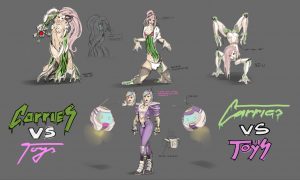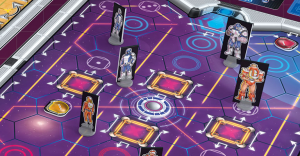We all know what is an adjacent space, right?
Here’s a cautionary tale of what happens if you move away from the usual conventions by streamlining things but still try to tap into intuitive understanding of those conventions.
Some context, in Dash Arena figures move (in a straight line) by entering adjacent spaces. The usual, apart from the move in a straight line requirement. With one important exception, if they exit through an edge that’s part of a direction arrow, they move to the other space pointed to by that arrow.
If you haven’t played Dash Arena yet, It’s easier to understand by looking at the image.
There are no walls in Dash Arena, only direction arrows that handle the mechanic of bouncing off walls.
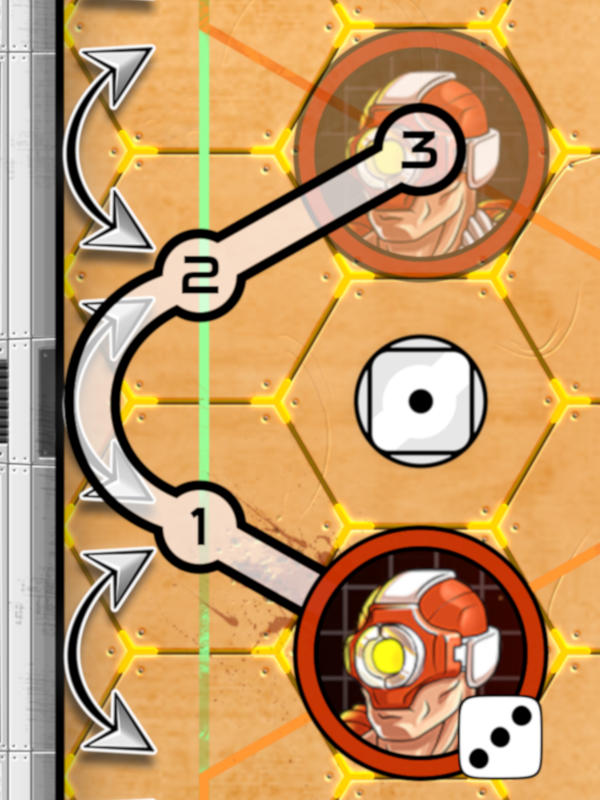
Let’s start with the simple and intuitive case.
Case Study #1
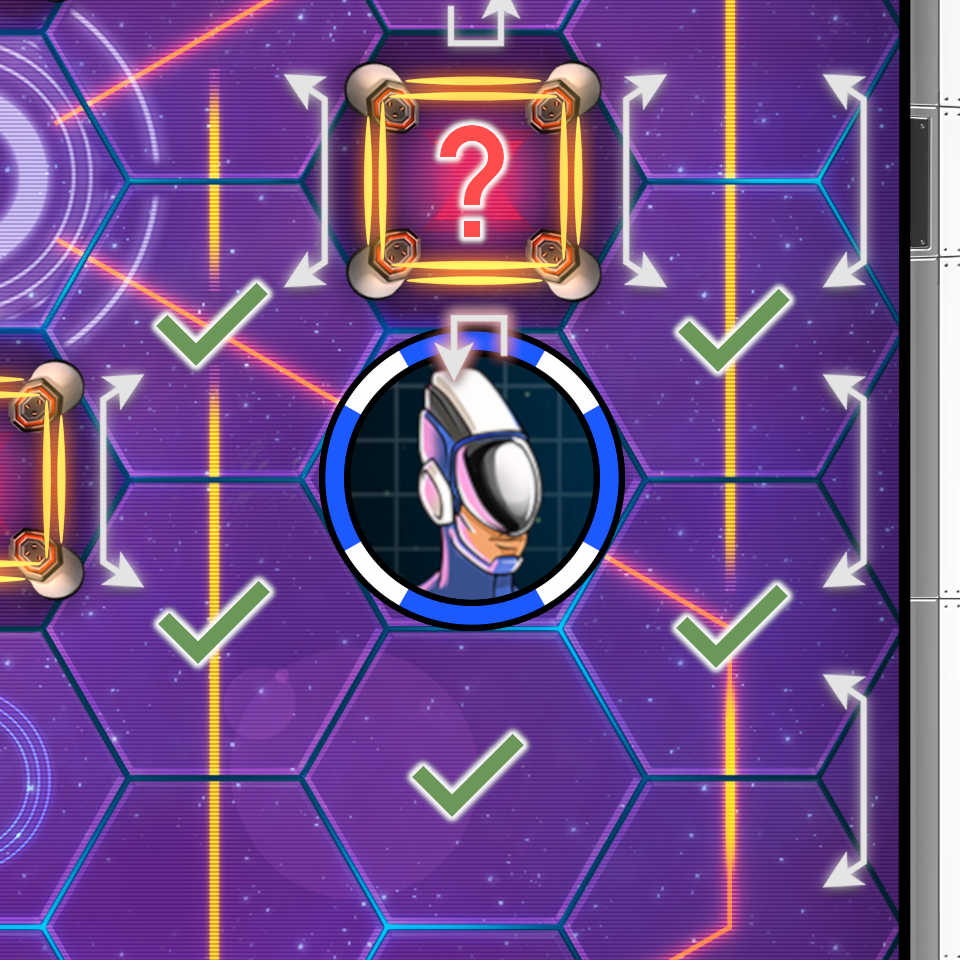
Why is this adjacency thing important? Let’s take a look at the Blue Thunder’s ability: Before Dashing, you may move to an adjacent unoccupied space. What is more intuitive to you? Letting it move to “?” or not? Keep in mind, intent of the rules is not the same as rules as written. I’d argue the ability is written in a clear way. But, as is tradition, that’s just my point of view.
Figure can’t enter the “?” space. Ever. Whenever it tries to, it bounces in the opposite direction. Is “?” space adjacent to any space? Is it adjacent to a figure? I’d argue that it’s not adjacent, because a figure can’t move into it. But that’s me, you might think differently. To be honest, I didn’t encounter a player that thought “?” is adjacent for the purposes of Blue Thunder’s ability.
Now, we have the following situation…
Case Study #2
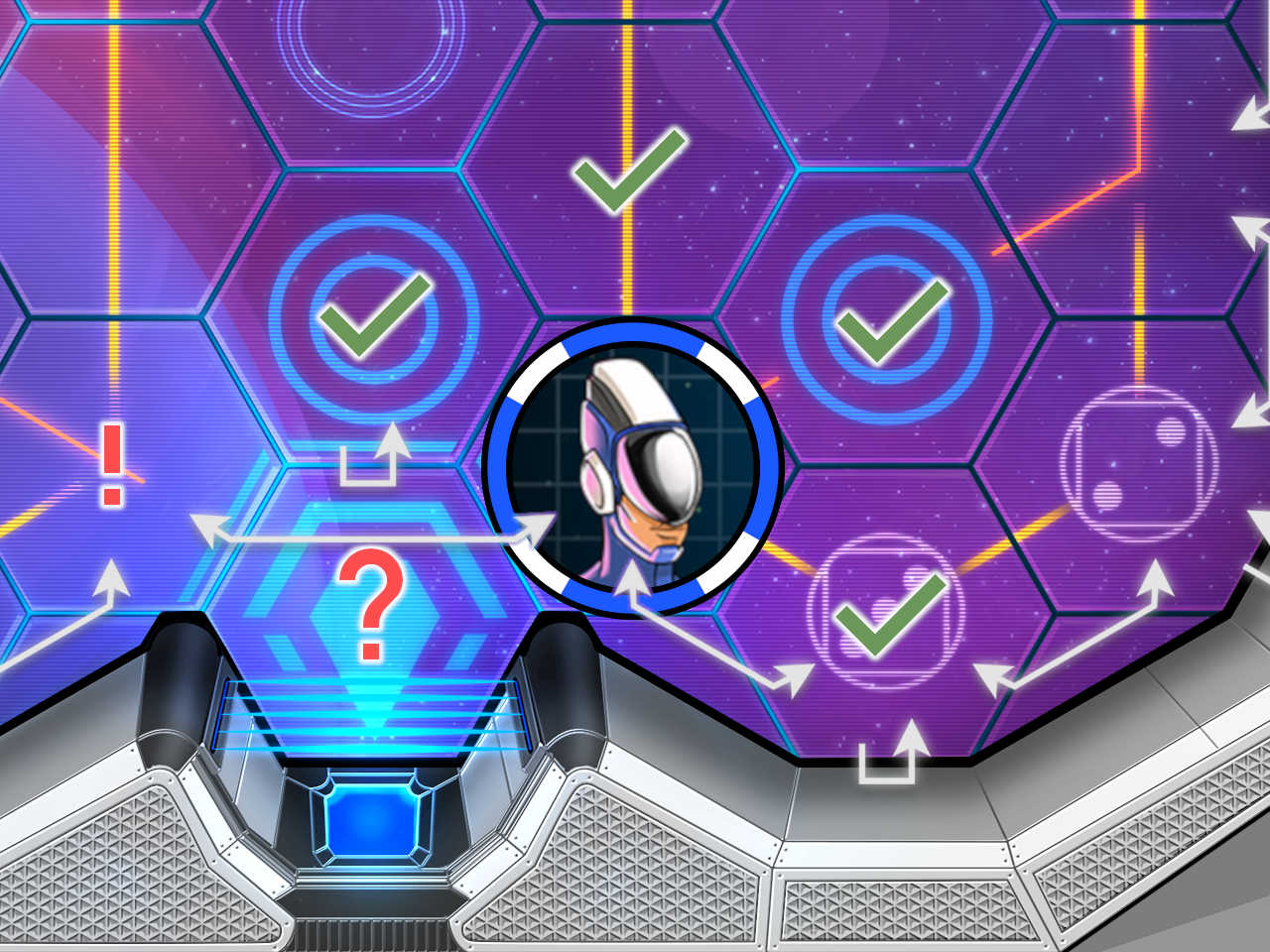
Here’s where the bizarreness of our intuitive understanding of adjacedness(is this a real word?) starts to show. Is “!” adjacent to the figure in this image? By moving one space, the figure will move to “!” space, but it’s not sharing an edge with the figure’s origin space. It’s clear cut, so no one would argue about it, right? Of course not. I heard multiple arguments why Blue Thunder should be able to move to the “!” space.
The most common argument: For 1 Impulse, she would move to that space, thus, it’s adjacent. This is the straightforward one, and, as you’ll see below, shows our bias in determining what “adjacent” really is.
Second most common argument: Goal space (“?”) is adjacent and unoccupied, figure tries to move to it, triggers direction arrow and moves to “!” space. If I’m around when this happens I usually follow up with something along the lines of: What happens if “!” space is occupied? Believe it or not, there are two different answers, one is that a figure can’t use its ability to move to an adjacent space and the other one is that it pushes the occupant by one space. Even figures that have to be pushed more than once. For example, you need to push 3 times in order to push Sonja one space. They would push Sonja instead of moving.
The Plot Thickens
There’s another figure with an adjacency ability. Duchess has the following ability: If the disk enters an unoccupied space adjacent to you, intercept it (not final wording, but most likely will be).
If we substitute Blue Thunder for Duchess on the previous image, players do not consider “!” space adjacent. At least not intuitively. Why is that? I’m not sure. Maybe it has to do something with Blue Thunder’s ability being movement related? I don’t remember getting a proper response from players that had this discrepancy on what an adjacent space is. It usally boiled down to some thematic consideration.
The result of all of this? We’re adding a formal definition of adjacency to our tournament rules reference and will most likely add a clarification what is an adjacent space in the rulebook for upcoming rival boxes. Yep, this was not caught during blind testing. The clarification will be: Space is considered adjacent to another space if they share an edge and figure can enter that space through the shared edge. Of course, it’s not the final form, I bet our editor will figure out a better way to put it. 🙂
Happy Dashing!

